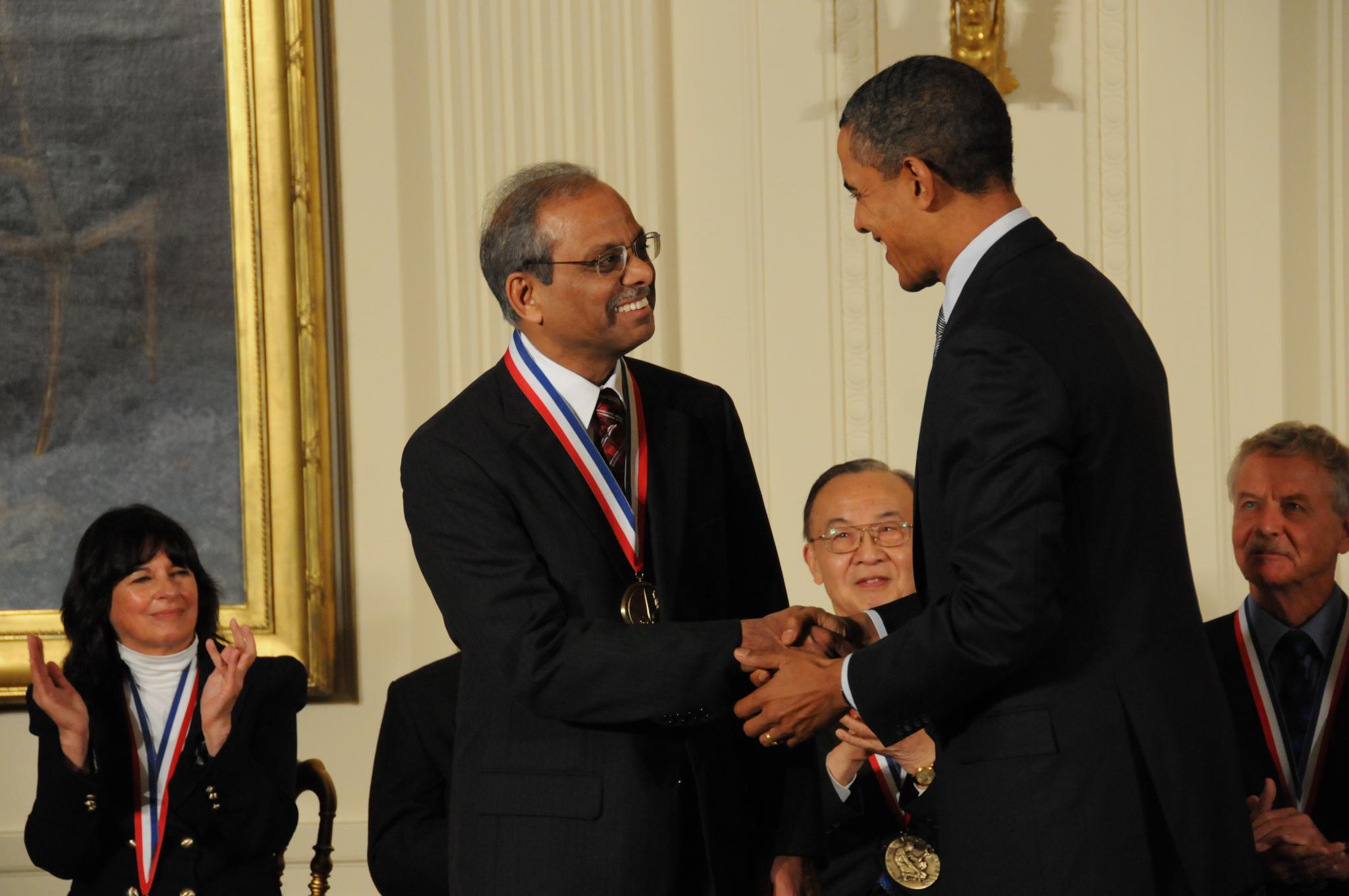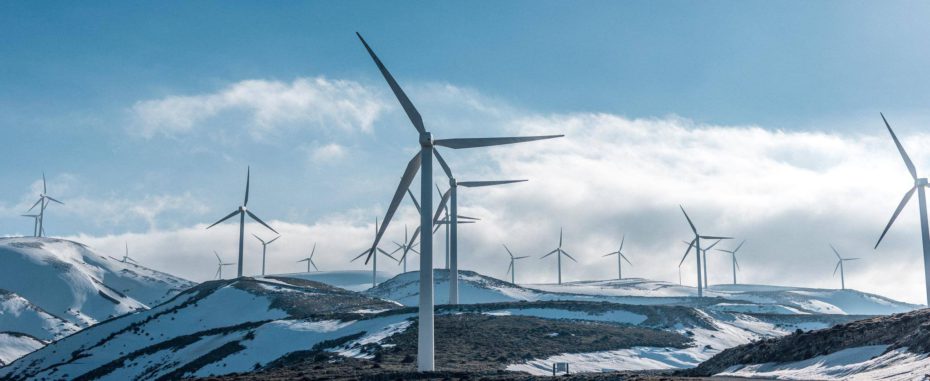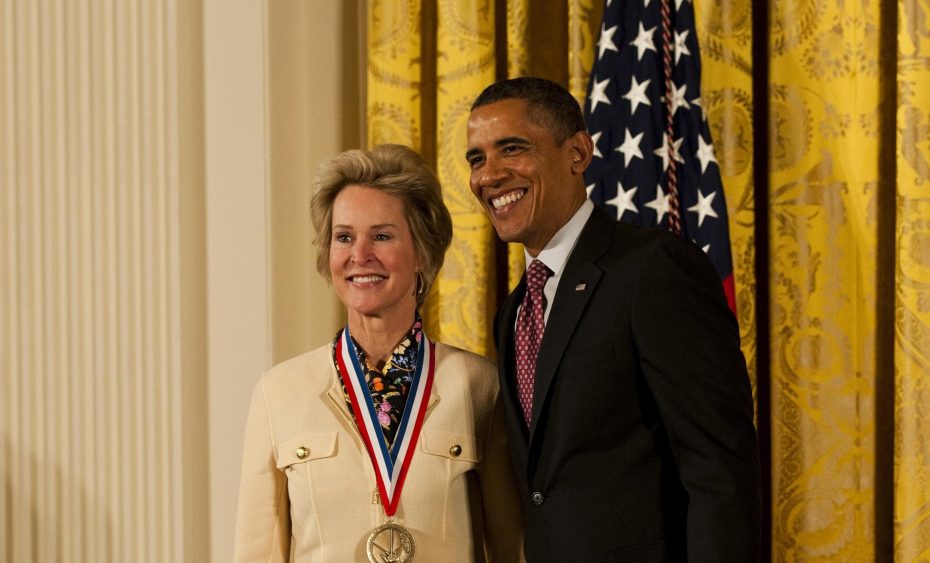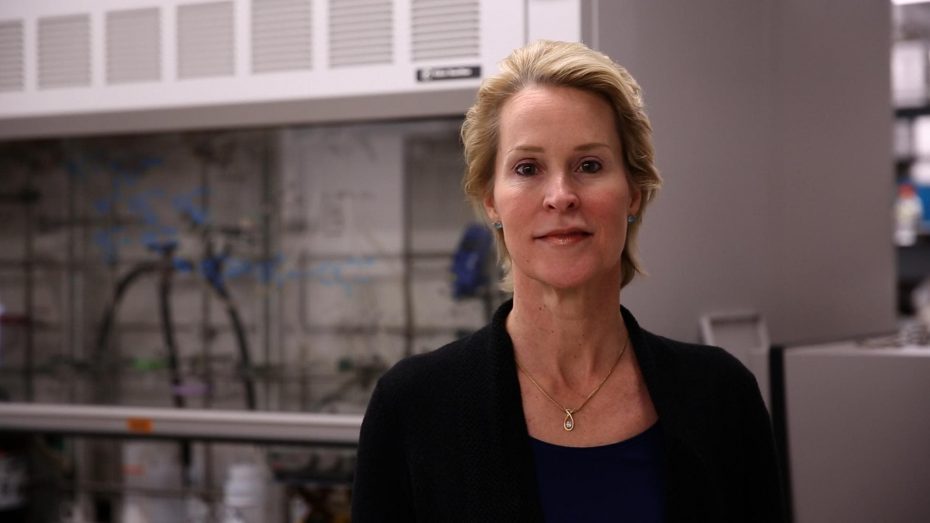Dr. Rakesh Agrawal was at a scientific conference in Greece in the summer of 2011 when he received a rather unusual email: the FBI was asking for his agreement to a background check. “That was the first inkling,” he said, that something unusual was happening. In September of that year, he found himself invited to the White House—he had won the National Technology Medal for his work on energy production and storage. How had he, a smart kid from a middle class family in India, become a professor shaking hands with the president?
Dr. Agrawal: His life, his work
The NSTMF explores the life of Dr. Rakesh Agrawal and how he continues to drive scientific and technological advancement

Agrawal grew up in Dehradun, a city in northern India surrounded by the foothills of the Himalayas. He was the eldest of three children. His father, Girdhal Agrawal, an accomplished photographer, worked at the Oil & Natural Gas Corporation, the country’s largest oil and gas producer, which is still headquartered in Dehradun today. A hard-working, successful man, the senior Agrawal would eventually become general manager at the Corporation and was so trusted that even after his retirement old colleagues would call him in frequently to seek advice.
Both parents encouraged Agrawal in his studying but also in finding a higher purpose. “They were very encouraging that I study and contribute to society. My father, in particular, was adamant that I contribute.” Though naturally talented at math and science, he most enjoyed history, so at first he considered a bachelor’s degree in history. But when his father raised concerns regarding the opportunities a still-developing country like India might afford him, Agrawal decided to enter as a science candidate at the Indian Institute of Technology in Kanpur—what was then and still is one of its premier universities.
Agrawal thought that he would do electrical engineering at IIT Kanpur—it was considered the most exciting of the engineering disciplines at the time because of the growing electronics market. But his father suggested he instead major in chemical engineering. He had already applied and been accepted as an EE candidate, which was highly competitive with only a few spots given each year, so the admissions committee was shocked to hear he was changing majors and actually laughed at him during his interview.
While unsure about his choice of discipline, he loved his professors and was impressed with his peers—all had worked hard to be there, giving the place a strong intellectual atmosphere which was one part camaraderie and one part competition. Four years later, with his B.A. in chemical engineering finished, Agrawal was looking to America for graduate programs.
Agrawal had grown up admiring America. As a teenager, most of his generation had idolized President Kennedy, following the space race and the man on the moon. And it was America’s technical achievements, more than its economic opportunity, that kept Agrawal’s interest—it was clear to him that if he wanted to learn from the best and contribute, as his parents had encouraged him, America was the place to go.
He chose the University of Delaware for his master’s degree, what was then a top-three engineering school in the U.S., and found himself once again in an intellectually charged atmosphere and surrounded by awe-inspiring faculty. Professors like Giovanni Astarita, Art Metzner, and Bob Pigford impressed him with their authority in subjects and the examples they offered from their own labs and research. “I used to think that people who published great experiments or principles were made of different material, not human beings,” he admitted. But once in class with them, he began to see his professors as human, like him, and to see the possibility that he might to do great things one day, too.
For his master’s, he’d chosen a more theoretical thesis on statistical thermodynamics with the help of his advisor and mentor, Stanley Sandler, but for his Ph.D., Agrawal wanted to do something experimental.
In the late 70s, the oil crisis was under way, and producers were trying to use heavier, less-than-ideal petroleum for refinement. But when using this kind of oil, the catalyst in the refining process slowly loses efficiency as metals in the petroleum deposit within the catalyst’s pores. Agrawal knew this was a serious problem and wanted to see if he could build a chemical reactor to measure how exactly this phenomenon occurred and possibly suggest solutions to deal with it, so he spent a year in a basement workshop, making his own high-pressure, high-temperature.

He asked another Delaware professor, James Wei, to advise him on the project. Wei agreed but went on sabbatical shortly after and never returned to Delaware. Instead, he was poached by MIT to become head of what had been, in the late 70s, a struggling chemical engineering department. (It is universally ranked #1 in the world today.) Suddenly Agrawal was faced with a difficult choice: lose his advisor or move to a less prestigious school.
Agrawal decided, in the end, to follow Wei to Boston and finish his dissertation there. While it might have seemed a risky move at the time, he called it fortunate because MIT offered so many other successful schools to draw from. Rather than focus exclusively on his reactor work, he could branch out and try subjects he’d missed in his specialization. “I took courses outside chemical engineering. Totally weird departments,” he said, laughing, and credits this as giving him the flexibility he’d need for many of the problems he’d later encounter.
Before graduating MIT, Air Products & Chemicals had offered Agrawal a job to study refining coal into liquid fuels—a nice overlap with his thesis in reaction engineering—but by the time he’d graduated, the company had decided not to work on coal fuels after all. Coal simply didn’t have the commercial viability to be worth the investment, and because Regan was about to start his presidency, the company expected the oil crisis to end, which meant even less pressure to find oil alternatives.

Instead turning him away, AP&C offered Agrawal work on gas separation, calculating pressure drops in distillation columns.
“I was petrified,” he said of his being informed. “What? Distillation columns? I think there was maybe one chapter on this from one of my undergraduate text books, but I had no clue how to do it.”
Despite his inexperience and shaky start, Agrawal would begin a twenty-four year climb through the ranks of the company, becoming a manager and technical team leader along the way and the youngest in company history to ever win their highest honor—the Chairman’s Award. Gas separation and distillation became something of his speciality, as it turned out. His advances in the field gave microelectronics companies, like Intel, the ultra-pure gases their fabrication plants needed and helped AP&C corner forty percent of the market worldwide. Successes like these established the reputation of Agrawal and his team within the company. But it was his work on the liquefaction of natural gas that would earn him the attention of many outside the company.
Liquified natural gas (LNG) is significant to the modern global economy. Natural gas, when extracted from the ground, is primarily gaseous—mainly methane and some nitrogen. In this state, it can be transported by pipeline, but for greater distances (like between continents), it must by cryogenically cooled and liquified to get it safely onto tanker ships. And because many countries cannot access natural gas by pipeline, LNG is a major American export.
In the 90s, Agrawal was given another challenging problem: see if it was possible to simultaneously improve the efficiency and production capacity of natural gas liquefaction plants. He took the next year to study and travel around the world to see how different countries had developed their plants, and at the end of the year, Agrawal and his team developed a design that would double AP&C’s plant capacity, raise its overall efficiency, and reduce cost by 10-15%. This radically changed the economics of building LNG plants—each cost several billion dollars at the time and was a major investment even for a company of AP&C’s size. Now the company could begin a rapid, back-to-back rollout of these newer, higher efficiency plants. This new design changed the scale at which they could produce and export LNG, upped the profitability of the division, and altered the economics of natural gas for energy generation and storage.
After Agrawal’s breakthroughs in natural gas, he found himself growing dissatisfied with his work. Around this time, a new CTO had arrived and, perhaps sensing his restlessness, commissioned Agrawal to create a study of emerging technical and socioeconomic trends around the world. The company wanted to find new business opportunities and created several new initiatives based on his report, but Agrawal became fixated on what he’d researched, particularly the energy and environmental crises that would shape our future if left unaddressed. The more he pondered the consequences of trends like global warming, the more he began to question the limits of the work he was doing.
From his work on ultra-pure gases, he knew the difficulty and huge amount of energy required to remove small impurities from a gas: trying to scrub something the size of our atmosphere of its carbon build-up—currently at several hundred parts per million—was simply out of the question. “You can’t run the clock backwards,” he said.
Luckily, Purdue University happened to approach him at this moment, giving him an opportunity to throw himself into tackling the problem in other ways, even if the work would not be immediately profitable. Bittersweetly, he left AP&C to start a professorship at Purdue, devoting himself to the study of renewable energy sources and to the modeling of their efficiencies as fossil fuel replacements.
Agrawal’s work now is an unusual mix of the theoretical and practical. Because he places such a large emphasis on modeling, his labs will consider an approach’s viability in the marketplace—does it actually have the large scale efficiency and cost to make it a reasonable energy alternative? This means that economically infeasible solutions are phased out while other ideas, which might have appeared too arcane or unorthodox to try, can be given a shot.

He and his research group currently work on incorporating nanoparticles into solar cells to improve panel efficiencies and the harvesting of agricultural biomass—not for energy but as a petroleum replacement for the carbon needed in polymers, plastics, and chemicals (modeling showed that the scale of land use makes biomass unfeasible as an energy or fuel solution). And after years of modeling, he’s also come to believe that low-cost production of hydrogen is crucial to the renewable solution. Though hydrogen fuel cell technology has so far been too expensive and complex to see widespread use, Agrawal thinks its development could be key to storing energy at large scales—improving liquid hydrogen storage, much like his work on LNG, could begin to unlock these possibilities. Hydrogen also feeds back into agricultural production—with it you can create the ammonia for ammonium nitrate fertilizer. And when combined with agricultural waste biomass, hydrogen can be turned into jet fuel.
These systems, working in harmony to feed one another, he sees as the definitive renewable answer. And as it so happened, the morning before our interview, his research group had just cracked a general separation problem for finding a low-cost low-energy distillation process—a problem that had gone unsolved for more than ten years and a key part of making biomass the alternative carbon source he envisions.
Discoveries like these keep him positive about the viability of renewables. Even the difficulties of adoption, he thinks, will simply allow for further preparation and research to improve energy alternatives.
Early on, as we were speaking about his remarkable career, I asked Agrawal what he thought made the difference. How had he come so far and produced so much impressive work? Rather than taking the credit, he immediately deferred to his peers, professors, and colleagues: “If you’re surrounded by smart people, you will do good things,” he said brightly. Which, I suppose, is another kind of answer too: humility, when coupled with a will to contribute to the world, can do good things. Maybe even great ones.



